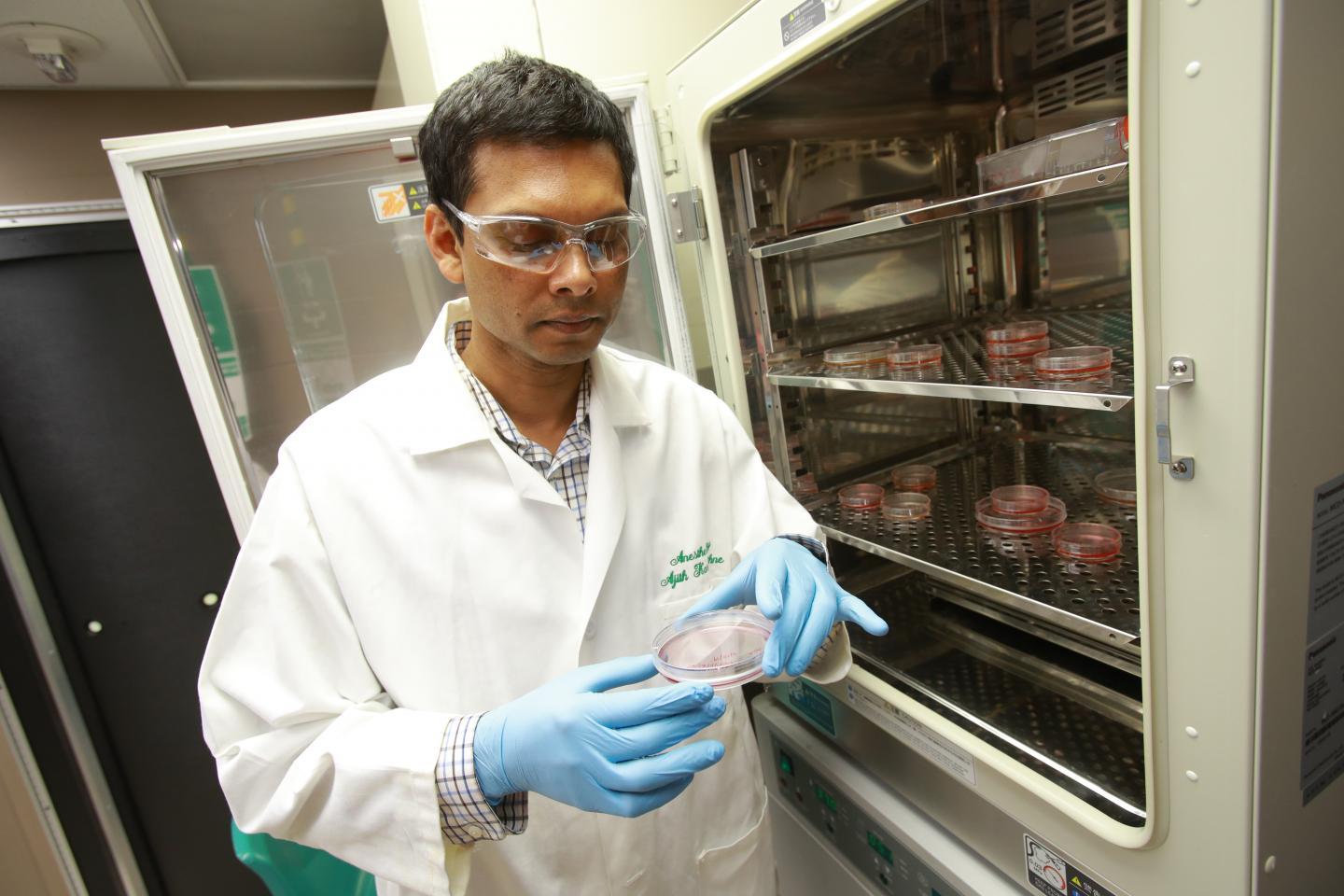The UToledo research published in Molecular Pharmacology finds that statins can be beneficial during heart attacks and cancer cell metastasis

Credit: Dan Miller, The University of Toledo
While investigating why cholesterol-lowering drugs called statins cause negative side effects such as blurred vision, short-term memory loss or increased risk for diabetes, cellular chemists at The University of Toledo discovered several previously unknown benefits.
It is well-established statins can help lower the risk of heart attack by lowering blood cholesterol, but statins also may play a protective role in the event of a heart attack because they can suppress a biological process that disrupts cardiac function.
By suppressing the activity of key cellular receptors called G protein-coupled receptors (GPCRs) and their interacting partners called G proteins, statins have the potential to alter various bodily functions controlled by this important pathway, according to research published in the journal Molecular Pharmacology.
“We believe this and our future investigations can help physicians make more informed decisions about prescribing statins, opening a whole new door to what statins can do in addition to cholesterol control,” said Dr. Ajith Karunarathne, assistant professor in The University of Toledo Department of Chemistry and Biochemistry.
GPCR signaling pathways are crucial to our survival. They are the largest pharmaceutical drug target – more than one-third of all drugs on the market – because GPCR pathways regulate the body by controlling a variety of functions from vision to heart rate and neurotransmission.
Statins are designed to target and inhibit the cholesterol-synthesis pathway, which is why it is an effective and popular drug to lower cholesterol. But parts of the cholesterol-synthesis pathway are needed for the GPCR signaling pathway to function, which explains the temporary negative side effects while taking statins, such as blurred vision or short-term memory loss.
The UToledo scientists also revealed another crucial finding: The cholesterol-lowering drugs reduce the ability of migratory cells, such as cancer and immune cells, to travel.
When testing GPCR-directed cell invasion, Karunarathne’s lab found that statins reduced movement more than 10-fold compared to the control group.
“This indicated that GPCR-governed cancer cell migration also can be reduced by statins,” Karunarathne said.
The research was done using cells, not human patients. Karunarathne’s lab uses light to control cell behavior – through a novel method named subcellular optogenetics – and studies the way cells respond to light through signal transduction pathways.
“We observed that different types of statins induce very different deviations or changes to G proteins in the GPCR pathway,” Mithila Tennakoon, a UToledo Ph.D. student in Karunarathne’s lab and first author of the study, said.
“The side effects of statins are not uniform,” Karunarathne said. “Cells in the eyes, brain, heart and lungs can have completely different impact levels because they have different types of G proteins.”
These findings help explain the molecular sources for side effects of statins, which Karunarathne’s lab discovered can have different effects on tissues and organs.
###
This research was supported by a grant from the National Institute of General Medical Sciences, part of the National Institutes of Health.
Media Contact
Christine Billau
[email protected]
Related Journal Article
http://dx.




